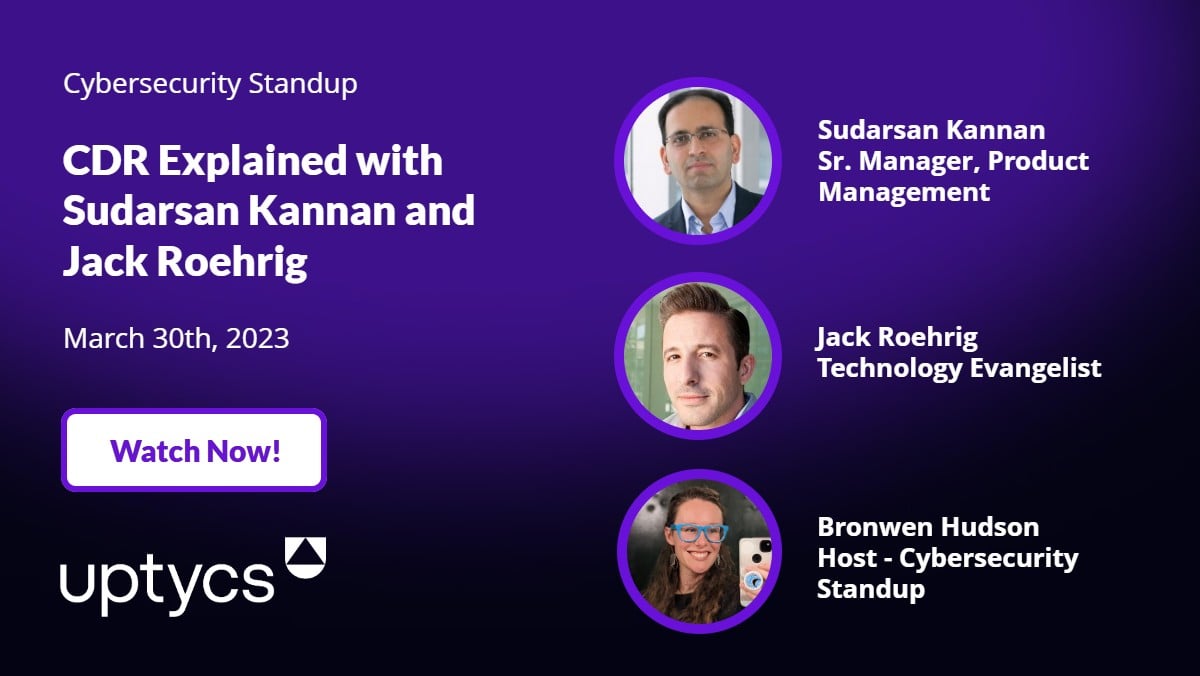Let’s discuss yet another acronym that is relatively new on the cloud security front: CDR. What is it? Why do we need it? How is it different from EDR and XDR?
EDR vs XDR vs CDR
Understanding the various types of detection and response solutions can help you create a more effective security strategy. Here's a quick rundown:
- Endpoint Detection and Response (EDR): Focuses on monitoring and securing endpoints like desktops and servers. It uses analytics and data specific to these devices to detect and respond to threats.
- Extended Detection and Response (XDR): An evolution of EDR, XDR offers a more comprehensive view by pulling in data from multiple sources, including networks, cloud environments, and applications. It aims to provide a unified approach to threat detection and response across various platforms.
- Cloud Detection and Response (CDR): Specializes in cloud-specific security threats and incidents. It provides visibility, analytics, and threat detection capabilities within cloud environments, integrating with various cloud service providers and native security tools.
While all three solutions aim to detect and respond to security threats, they differ mainly in the attack surfaces they are designed to protect and the types of telemetry they employ for this purpose. For organizations utilizing hybrid-cloud or fully cloud-based environments, it's crucial to have a detection and response strategy that spans the entire digital landscape.
The role of cloud detection and response
This approach aims to protect cloud applications and infrastructure by providing visibility, advanced analytics, and capabilities to detect cloud-specific vulnerabilities and threats. It integrates with various cloud service providers and native security services to offer real-time, actionable insights into malicious activities, unauthorized access, and unusual behavior in the cloud. Once a threat is detected, it assists in both investigating and resolving the issue, thus maintaining a robust security posture.
Why add cloud detection and response to your strategy?
As businesses continue to adopt cloud services, securing these new environments is no longer optional but essential. Rather than complicating your strategy with multiple tools and interfaces, consider opting for a unified security platform. This would combine the capabilities of both XDR and CDR into a single manageable interface, making it simpler to manage your security needs.
What Uptycs brings to the table
Cyber criminals are becoming increasingly savvy about cloud security, which makes it all the more essential to bolster your defenses. Uptycs' Cloud Detection and Response offers a comprehensive suite of features aimed at confronting cloud security challenges head-on.
Uptycs CDR addresses key challenges in cloud security by detecting and alerting about malicious activities within your environment. Some cloud-specific detections Uptycs will surface include:
- Privilege escalation – Identifying attempts to gain higher-level permissions within your cloud account. For example, an attacker might revert an account access policy
to a previous, more permissive version. - Enumeration – Detecting an attacker’s discovery activity, including the extraction
of usernames, machine names, network information, and other services to uncover potential attack vectors. - Persistence – Recognizing efforts to maintain access to an environment, avoiding interruptions, such as killed containers or changed credentials.
- Exploitation – Spotting security flaws or vulnerabilities being taken advantage of within your cloud environment.
- Data exfiltration – Detecting attempts to steal sensitive data (e.g., personal information, intellectual property) for malicious purposes, such as when copying and mounting a disk image to a different Amazon Machine Image (AMI) controlled by the attacker.
Uptycs CDR not only alerts you about these security threats, but also provides simplified explanations and actionable steps for remediation. By partnering with Uptycs, your business can be ensured of a robust cloud security posture without needing in-house expertise, thus enabling your teams to focus on core operations.
Learn more
Webinar:
How (and why) to think like a threat actor in the cloud
Blog:
Go Beyond CSPM to Cloud Detection & Response
Blog:
CDR Detection Categories: Unveiling Why Threat Actors Despise Cloud Detection & Response







%20copy%205.png?width=352&name=Untitled%20design%20(2)%20copy%205.png)
